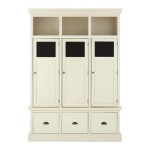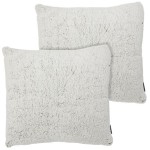```html
Sears Home Decor Catalogue: A Historical Overview and Key Aspects
The Sears Home Decor Catalogue, a subset of the larger Sears, Roebuck and Co. catalogue, played a significant role in shaping American domestic aesthetics and consumer culture for over a century. Its influence stemmed from its accessibility, affordability, and comprehensive selection of home furnishings, decorative items, and building supplies. The catalogue provided a window into contemporary styles and trends, allowing even those in remote rural areas to participate in the evolving world of interior design. This article explores the historical development, key features, and lasting impact of the Sears Home Decor Catalogue.
The genesis of the Sears catalogue, including its home decor offerings, can be traced back to the late 19th century. Richard Warren Sears and Alvah Curtis Roebuck founded the company in 1886, initially focusing on mail-order watches and jewelry. As the company expanded, it began to include a wider range of products, catering to the needs of rural populations who lacked access to urban retail centers. The catalogue became a crucial link between manufacturers and consumers, offering a convenient and reliable shopping experience.
The Sears Home Decor Catalogue wasn't a standalone publication in its early years. Instead, home furnishings and decorative items were integrated into the larger general merchandise catalogue. However, as demand grew and the variety of products expanded, dedicated sections focusing specifically on home decor began to emerge within the larger catalogue's structure. These sections showcased furniture, rugs, curtains, lighting fixtures, wallpaper, and a multitude of smaller decorative accessories designed to enhance the home environment.
With each passing decade, the content of the Sears Home Decor Catalogue reflected the prevailing design trends and technological advancements of the time. The early 20th century saw the inclusion of items associated with the Arts and Crafts movement, the later Art Deco, and the developing Mid-Century Modern styles. The catalogue proactively mirrored, and sometimes even propelled, the adoption of new materials, such as plastics and synthetic fabrics, into home furnishings.
Affordability and Accessibility: Key Drivers of Popularity
One of the core reasons for the Sears Home Decor Catalogue's widespread appeal was its commitment to affordability. The company employed mass production techniques and leveraged its massive buying power to offer a wide array of products at competitive prices. This affordability made stylish and functional home decor accessible to a broader segment of the population, particularly those with limited budgets. Sears effectively democratized access to design trends, allowing families from various socioeconomic backgrounds to create comfortable and aesthetically pleasing living spaces.
Beyond affordability, the catalogue's accessibility was equally important. The mail-order system bypassed the limitations of geographically restricted retail stores. For rural communities and individuals who lived far from urban centers, the Sears catalogue provided a vital link to the world of consumer goods. The postal service became a crucial partner in the distribution network, delivering the catalogue directly to homes across the country and facilitating the shipment of ordered products. This eliminated the need for long and often arduous journeys to distant stores, saving time and money for consumers.
The catalogue also provided detailed descriptions, illustrations, and sometimes even color swatches of the products on offer. This enabled customers to make informed purchasing decisions without physically inspecting the items. The extensive product information, combined with the company's reputation for reliability, fostered trust among consumers and further fueled the catalogue's popularity. The ordering process was streamlined and user-friendly, making it easy for anyone to browse, select, and purchase items from the comfort of their own home.
The Sears Modern Homes Program: Extending Decor Beyond Furnishings
A particularly noteworthy aspect of Sears' influence on home decor was the Sears Modern Homes program, which ran from 1908 to 1940. This program offered customers the opportunity to purchase entire house kits through the catalogue. These kits included all the necessary materials and instructions to build a complete home, from the foundation to the roof. While not strictly limited to *decoration*, the Modern Homes program certainly touched on the decor aspect as buyers had to eventually furnish these homes, largely influenced by the Sears’ expansive product selection including furniture, lighting, and textiles.
The Modern Homes program epitomized Sears' commitment to providing comprehensive solutions for its customers. The homes were designed in a variety of architectural styles, ranging from Craftsman bungalows to Colonial Revivals, offering options to suit different tastes and preferences. The kits were carefully packaged and shipped directly to the building site, simplifying the construction process and reducing costs. Many of these Sears Modern Homes still stand today, serving as a testament to the enduring quality and design of the program.
The inclusion of the option for pre-cut lumber and standardized parts contributed significantly to the affordability and ease of construction. This reduced the need for specialized carpentry skills and allowed homeowners to build their own homes with minimal professional assistance. The Modern Homes program not only provided affordable housing options but also empowered individuals to take control of their living spaces and participate in the American dream of homeownership. The program indirectly influenced the decor choices of these homeowners, as they often turned to the Sears catalogue for furnishings and decorative items to complete their homes.
Influence on American Interior Design and Consumer Culture
The Sears Home Decor Catalogue exerted a profound influence on American interior design and consumer culture. By showcasing the latest trends and providing accessible products, the catalogue helped to shape the aesthetic tastes of generations of Americans. It played a significant role in popularizing certain styles, materials, and color palettes, contributing to the homogenization of interior design across the country. The catalogue effectively democratized access to design innovations, allowing even those in remote areas to participate in the evolving world of home decor.
The catalogue also contributed to the rise of consumerism in America. By offering a vast array of products and promoting the idea of a well-furnished and aesthetically pleasing home, Sears encouraged consumers to spend money on items that were not strictly necessary for survival. The catalogue fueled the desire for material possessions and helped to establish the idea of the home as a reflection of personal identity and social status. This shift in consumer attitudes had a lasting impact on American society.
Furthermore, the Sears Home Decor Catalogue played a role in professionalizing the field of interior design. By publishing articles and providing advice on decorating techniques, the catalogue helped to educate consumers about design principles and best practices. This contributed to a growing awareness of the importance of interior design and helped to elevate the status of professional designers. The catalogue served as a valuable resource for both amateur decorators and aspiring professionals, fostering a deeper understanding of the art and science of creating beautiful and functional living spaces.
The catalogue's advertising strategies, photography, and written descriptions were carefully crafted to appeal to a broad audience. These elements presented an idealized vision of domestic life, subtly influencing consumer aspirations and expectations. The visual imagery used in the catalogue often featured staged rooms and happy families, reinforcing the idea that a well-decorated home was essential for achieving happiness and fulfillment. This persuasive advertising contributed to the catalogue's enduring success and its lasting impact on American culture.
While the print version of the Sears catalogue, including its home decor sections, eventually ceased publication, its legacy continues to resonate in the world of interior design and consumerism. The principles of accessibility, affordability, and comprehensive product selection that defined the Sears Home Decor Catalogue remain relevant in today's digital age. Online retailers and e-commerce platforms have inherited the mantle of providing consumers with a vast array of home decor options at competitive prices. The Sears Home Decor Catalogue served as a pivotal forerunner to the modern approaches of at-home decorating and shopping.
```
1925 Sears Modern Homes 1920 House Catalog Interior

Sears 1960 Fall Catalog Mid Century Furnishings Vintage Decor 1960s

1914 Sears Household Catalogue Vintage House Plans Interiors Catalog

Catalogue No 112 Sears Roebuck And Company Free Borrow Streaming Internet Archive Europe Palaces Catalog

1978 Sears Home Improvement Catalog Decor Collectible Kitchens Amp Baths Vintage

1929 Sears Modern Homes Catalog House

The History Of Sears Kit Homes Craftsman Blog

Sears Modern Homes 1927 Roebuck Co Free Borrow And Streaming Internet Archive Catalog Vintage Architecture 1920s House

What It S Like To Live In A Sears Catalog Home

Sears Catalog Homes We Love Bob Vila







